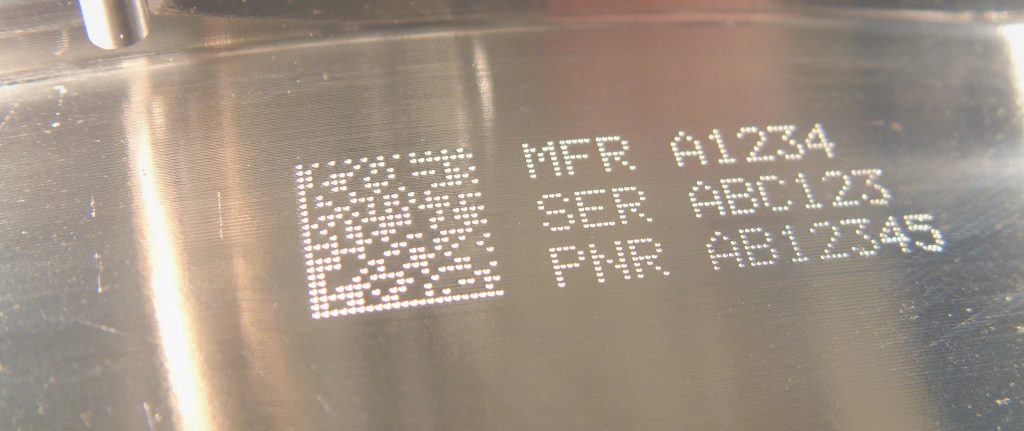What is the AS9132 Specification?

AS9132 is a specification for the Direct Part Marking of aerospace components.
It is issued by the International Aerospace Quality Group (IAQG) to define the process requirements for 2D Data Matrix part marking, relative to metallic parts. The standard provides process help for the manufacturer to produce and maintain the optimum 2D Data Matrix code.
The standard is international and issued in 3 regional formats but is the same across the languages:
AS 9132 = Americas (English) – now on revision AS9132b
SJAC 9132 = Asia Pacific (Japanese)
EN 9132 = European (English)
General Requirements
The general requirements of AS9132 are laid out to define and detail the various attributes of the 2D Data Matrix.
It provides general information to determine Data Matrix cell sizes and universal machine set up requirements.
The standard takes into account surface finish in determining the optimum Data Matrix size and provides guidance for marking curved surfaces.
How Do I Use AS9132?
AS9132 is an international process standard that is very often used by other engineering companies and organisations as a benchmark for good readability of 2D Data Matrix marks. The requirements often read across into ‘local’ standards or specifications and in some cases, they will be referenced directly.
The standards will assist greatly when setting up 2D Data Matrix marking equipment and is a good source of information to resolve process issues.
AS9132 Key Points
- The standard is used directly or indirectly by most major engineering organisations and is referenced by the US Government’s MIL-STD 130
- The standard promotes the use of Quality Assurance Plans and Preventive Maintenance Plans to reduce the risk of producing 2D Data Matrix marks outside allowable limits
- Using the standard for quality inspection of a 2D Data Matrix will provide electronic readers / scanning devices the best chance for first time reads
- The standard does not mandate engineering requirements such as dot depths and/or areas to mark a part
- The standard is used for understanding of the optimum process requirements for readability of 2D Data Matrix marking and is not used for material performance assessment.
Data Matrix Requirements
For a Data Matrix code marked on a component for identification purposes, the standard measures dot size, angle of distortion and dot centre offset. The standard generally just considers a Pass/Fail of the mark against the criteria.
- Dot size needs to be between 65% and 105%
- Dot centre offset needs to be within 0% and 20% of the ideal grid
- Angle of distortion up to 6 degrees variation on the L shaped finder pattern
A lot of aerospace OEMs and tier suppliers use this standard. A copy of the standard can be purchased from the SAE: http://standards.sae.org/as9132b/, however, many OEMs incorporate the requirements into their own standards, for example Rolls-Royce standards JES131 and RRES90003.
A Useful Feedback Loop
AS9132 provides useful feedback as to why a Data Matrix code has failed a verification check.
When the Pryor verification software detects a failed code it will provide the user with a relevant list of things to check to correct the problem.
Some tips on how to achieve a Pass grade in AS9132 are given in this article.